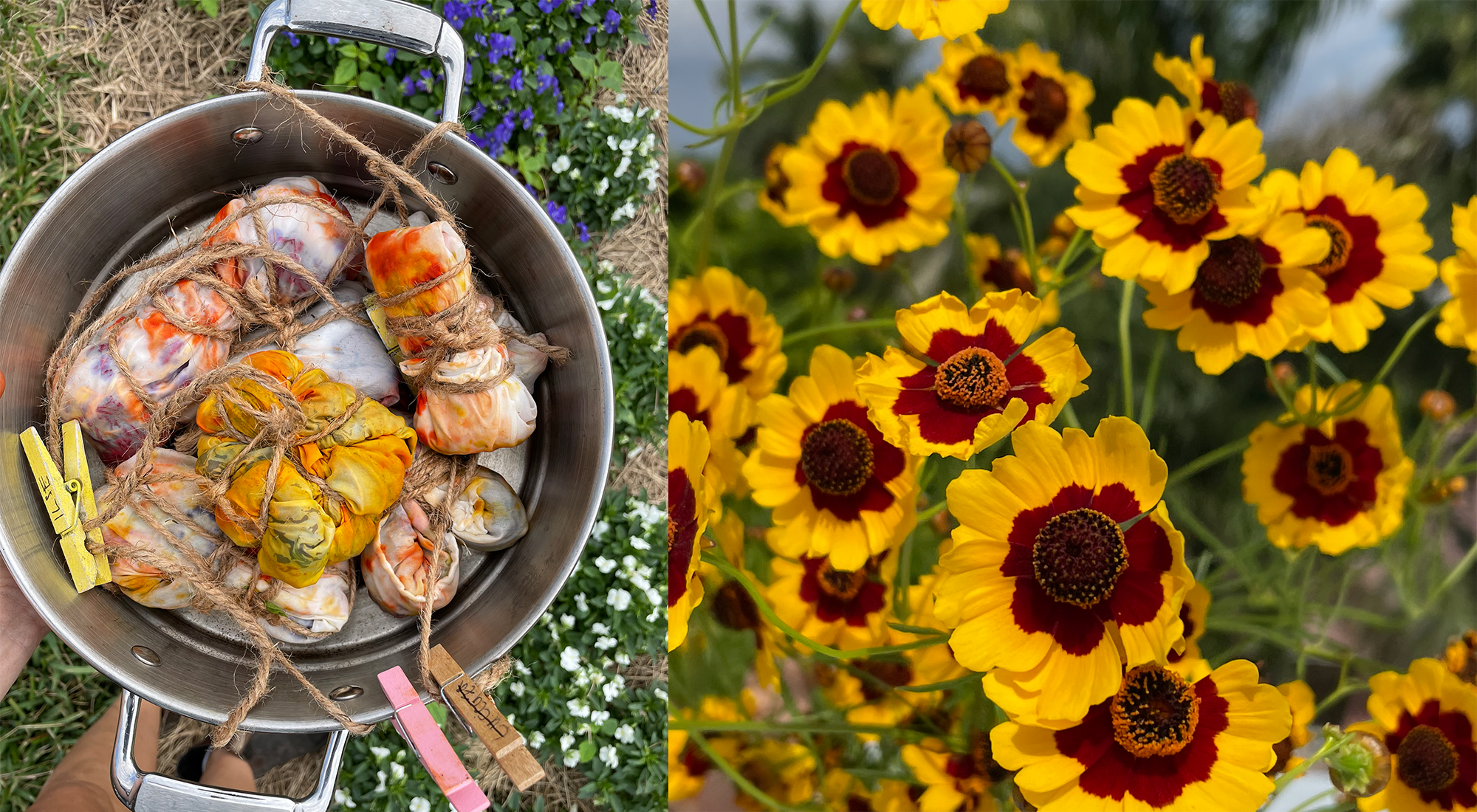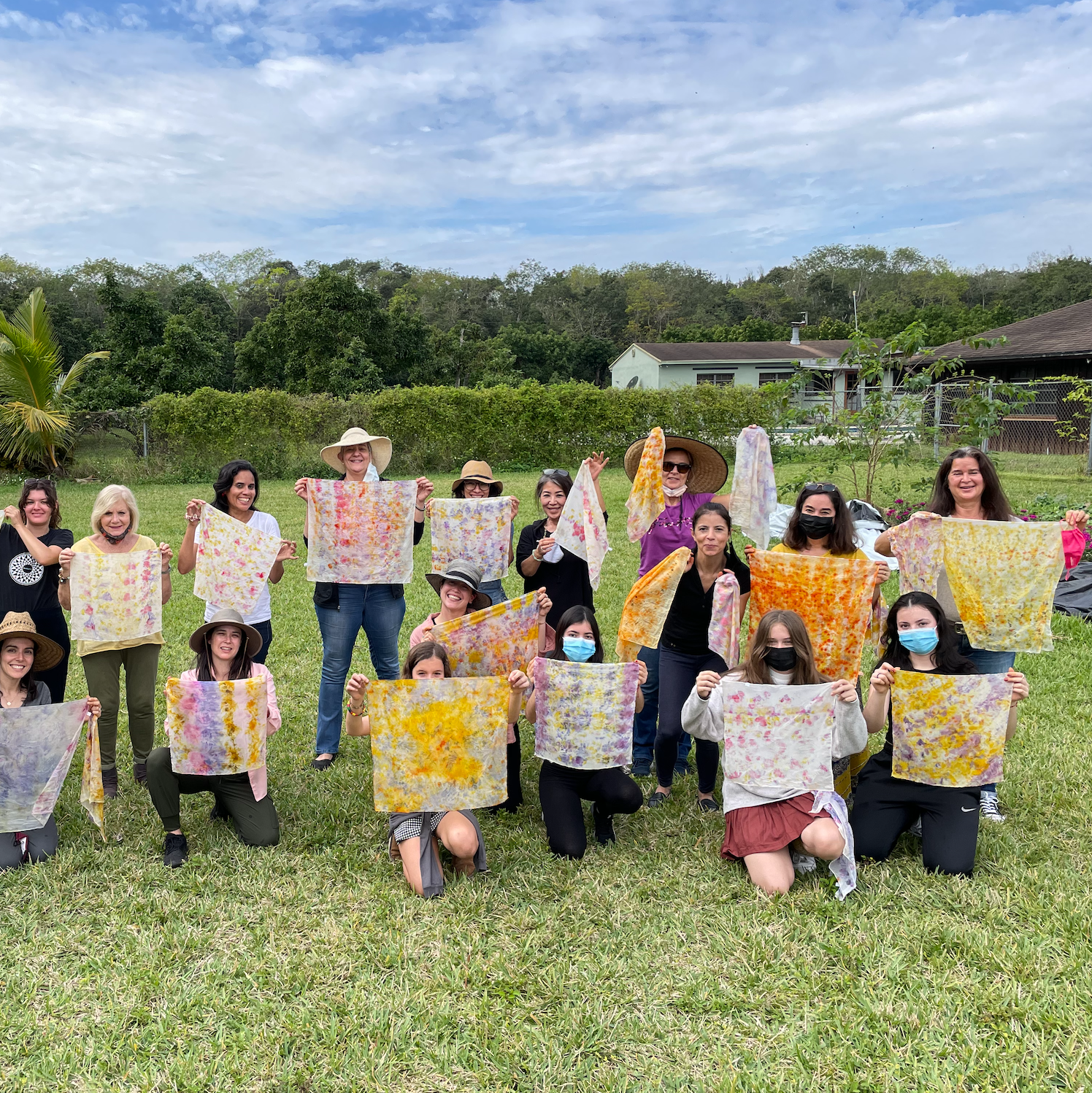February Gardening: Getting Creative With Your Abundance!
February is a fun gardening month in South Florida because its a bit of a sweet spot. Most of your garden is planted, the weather is cool, the pests are manageable, and the harvests are happening. We can tell when everyones gardens are happy and full because we see less customers come through the nursery! Bad for our bottom line but good for the gardeners... it means that the plants they've bought or started from seed are happy and making food and things are just cruising along, which we love. We don't mind the lull, we actually take advantage of it to prepare for our big summer inventory switch. While it might seem crazy to be thinking about summer plants already we have to start thinking about them so we can propagate the slower growing plants in time for them to be happy, well rooted plants come May when we start selling them. We thought it would be fun to have this months garden blog post focus on some creative stuff you can do with and in your garden to take advantage of the bounty and beautiful chilly weather of February instead of talking about practical stuff like harvest techniques and pest identification. Last months blog post was all about incorporating flowers into your garden and then using them, so check that post out too for more inspiration!
An edible garden isn't just useful for cooking theres lots of other fun activities that a thriving garden can inspire. Last year we hosted our first ever plant dye workshops with local herbalist Sun Sister and they was super fun! We did a simple immersion dye bath made with fresh marigolds and a bundle dyed scarf that we used all sorts of materials for. Bundle dyes are direct pigment transfers so you use super saturated colorful material and the color basically bleeds onto the fabric you are dyeing. We gathered all of the ingredients for this from our family garden like marigolds, turmeric, cranberry hibiscus, purple cabbage leaves, violas, begonias, geraniums, and even red lettuce! Plus we foraged for some wild ingredients like brazilian pepper and bouganvillea blossoms. If you want to give it a try heres a step by step tutorial to do this simple plant project at home.
Other flower based creative crafts that we've tackled over the year include egg decorating and dyeing, flower crown making, raw cookie decorating, sun printing, and making and painting with plant pigment. And paper making! Oh, and soap making! There are tons of resources online if you want to try your hand at getting creative with plant material, and with lots of blooms & herbs in your garden most of the material you need is free and right there waiting for you.
A close up of taqueria carrots, recipe from “Saving the Season” by Kevin West
If you are more info food projects we indulge in lots of those thanks to the bounty of the winter gardening season. This time of year farmer Tiff is making all sorts of preserved goods for the French Farms farmers market booth, like sauerkraut, spicy pickled carrots, fennel & cherry tomato confit and her famous kimchi. Lacto-fermentation is a great technique to learn for preserving all sorts of veggies like cucumbers, radishes, turnips, green beans and cabbage. Wild Fermentation, by Sandor Ellix Katz is the bible of lacto-fermentation and a great place to start if you are a newbie. Once you master a few simple techniques you can really start to get creative with whatever your garden is making too much of. Confit is a cooking technique that is basically super slow poaching something in fat. The most famous type is duck confit, but you can use olive oil and confit lots of vegetables too. Tiffs favorites are fennel and lemon confit for which she uses this recipe (ignore the terrible photo this stuff is delish...) and a simple Sungold cherry tomato confit that she found in the Gjelina cookbook many years ago. The process of removing all of the cherry tomatoes skins is tedious but worth it, since you end up slow cooking the flesh and juices with thyme, oregano, lots of garlic and olive oil. If you submerge the solids in the fat then you can keep this stuff in the fridge forever and use it as a flavorful base for cooking or something to pour over crusty bread when you've got visitors to impress.
If you need some fermentation inspiration these are Tiffs favorite resources that she turns to again and again for inspiration and recipes. While recipes are great they oftentimes call for lots of unique ingredients that you have to go hunt and shop for, so once you have some basics down get out there and freestyle with whatever you have in the garden. Slugs got your swiss chard? pickle the colorful stems! Arugula got too big and spicy? Add some kale to tone down the spice and make a pesto. green beans really pumping? Add some dill and lacto-ferment the suckers! or quick pickle them with garlic and apple cider vinegar. Wind knocked a bunch of unripe starfruit off of your neighbors tree? pickle them umeboshi plum style! ok, ok, we'll stop. you get the point. Gardening can be so rewarding as a hobby on its own but its also a great inspiration point for branching out into new creative endeavors.
If those aren't enough ideas to get your creative juices flowing we wanted to quickly mention easy to make items that use medicinal plants and herbs. A tincture is an alcohol or glycerin based botanical extraction that people have been using as medicine since well... medicine began! Heres a super thorough explanation of the basic process from a very reputable herb company for you to check out. Typically different types and strengths of alcohol are used for different types of material (like, fresh leaves versus something hard like a resin or wood) and you can use fresh or dried herbs. Oil is another substrate that can pull aromatic, flavor and medicinal qualities out of botanicals, and typically one uses dry herbs for that since oil and water don't mix. Fire cider is a popular herbal concoction used for general health and immunity building that uses apple cider vinegar as a base and it has lots of tropical garden goodies in it like ginger, turmeric, spicy peppers, rosemary & oregano.
The most inspiring book we have found for gardeners who want to get into preserving and using what they grow it Self Sufficient Herbalism by Lucy Jones. This book is full of information about the herbs she uses but she lives in England which is a very different growing environment, so don't get too hung up on using the exact same plants that you read about. Easy to grow beginners medicinals that you might already have in your garden or neighborhood down here in South Florida include tulsi (aka holy basil), chamomile, turmeric, ginger, barbados cherry, lemongrass, aloe vera, calendula, yarrow and spilanthes. And don't forget that most culinary herbs also have strong medicinal properties, like thyme, oregano, sage & rosemary.
If you'd like to learn more about using medicinal plants we have some medicinal plant workshops scheduled for the month of February, check em out and join us to learn about making medicine yourself with plants you grew.






